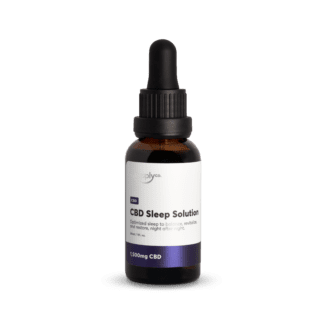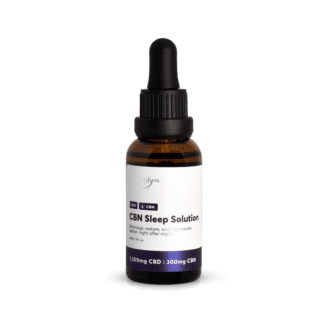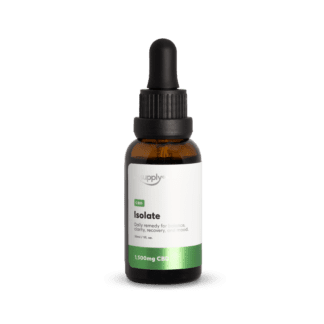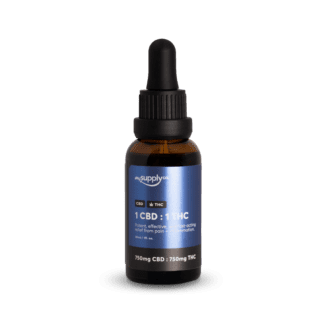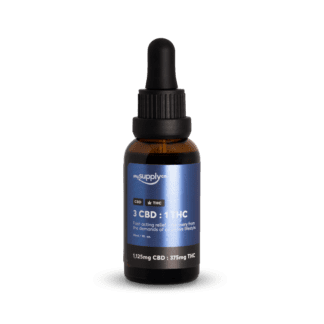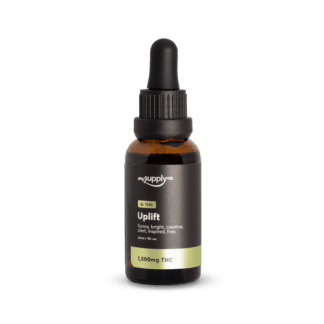Key takeaways.
-
What are cannabinoids?
Cannabinoids are a class of compounds found in cannabis that are major contributors to cannabis' therapeutic effects. No other plant makes cannabinoids except for cannabis.
-
What are the main cannabinoids?
THC; the one that gets you high. CBD; not psychoactive but has lots of therapeutic properties. CBG, CBN, CBC; other very therapeutic cannabinoids that are found in smaller amounts in cannabis flowers.
-
What else can be found in cannabis?
Other than cannabinoids, terpenes are a major contributor to cannabis' smell, taste, and effects. They are the aromatic compounds in cannabis. Flavonoids are also abundant in cannabis flowers!
-
What is the entourage effect?
The entourage effect is the term used to explain the synergistic activity between cannabinoids and terpenes. The unique combination of cannabinoids and terpenes is what differentiates each strain, and also what is said to produce the medicinal effects of cannabis.
Just like only tobacco makes nicotine, only cannabis makes cannabinoids. Today, we're in a unique time where we are trying to harness the therapeutic potential of cannabinoids while trying to bring them out of a proverbial “dark age” of prohibition. In any case, cannabinoids are what make cannabis cannabis. They are what makes the plant special, unique, and of particular interest to humans.
Cannabinoids are not like caffeine or theobromine, which are active constituents found in a lot of plants; coffee, tea, and guarana all contain caffeine. Cacao, tea, and Yerba Mate all contain theobromine. But we don’t know of a single other plant species in the world that produces cannabinoids. There’s only one—and that’s cannabis.
These plant chemicals, or cannabinoids, hold a special place in our lives.
But why is that?
For thousands of years, people have been using cannabis for all sorts of reasons, from medicine to rope and concrete.
Cannabinoids are the main focus when we study cannabis medically. They are the reason we feel a 'buzz' when we use cannabis, and researching cannabinoids has led to some of the most important medical discoveries of the 21st century.
We're still learning about the meaning of cannabinoids, compiling a list of cannabinoids, understanding the effects and benefits of cannabinoids, and even exploring how cannabinoids might help with cancer pain. This all shows just how important and fascinating these plant chemicals are.
Cannabinoids: The reason we know about the endocannabinoid system at all.

Before we dive into the scientific realm of cannabinoids, let's take a quick trip down memory lane to understand the evolution of cannabinoid research.
It was barely three decades ago that one of the most crucial systems in our body was uncovered—the endocannabinoid system—and it's all thanks to the relentless pursuit of knowledge in cannabinoid research.
Here's a quick rundown of the tale:
In the waning years of the 19th century, R.S. Cahn was the first to isolate and identify CBN from a red oil extract of cannabis. Fast forward a few decades to the 1940s, a team of researchers led by R. Adams in the USA managed to isolate CBD. However, it wasn't until 1964 that Raphael Mechoulam was able to isolate and identify THC.
This breakthrough led scientists to a key question: if THC has such an impact on humans, there must be a receptor somewhere within our body or brain that warmly welcomes THC. This thought sparked a research study at St Louis University, which led to the confirmation of cannabinoid receptors.
With the existence of cannabinoid receptors now confirmed, it only made sense to question their purpose. Surely, these receptors weren't just patiently waiting in our brains solely for the grand entrance of THC?
Answering this exact question became Mechoulam and his team's mission in the early 90s. After careful study of cannabinoid receptors and their locations in the brain, they discovered the first endogenous cannabinoid: anandamide.
That's interesting, but why does it matter?
This marked a milestone in modern medicine. It shed light on a previously unknown facet of human physiology—the endocannabinoid system. While the complete picture was yet to be revealed, it suggested the presence of a ligand-receptor signaling system, previously unheard of.
We now know this signaling system as the endocannabinoid system. It's this miraculous discovery that we owe to cannabis research, underpinning our understanding of the role of cannabinoids in the body.
The many cannabinoids of cannabis.
As the doors for cannabis research continue to widen, we're beginning to realize that the discoveries made so far are just the beginning.
Back in the 90s, researchers had only isolated and identified a handful of key cannabinoids, including THC, CBD, and CBN. It's important to mention here that the slow pace of cannabis research was primarily due to the challenge of obtaining cannabis for study.
The culprit? Strict laws against the plant.
But things are changing. As we awaken from a long period of scientific dormancy, the growing legalization of cannabis is paving the way for more extensive research. In the last twenty years, we've learned more about cannabis than in all previous years combined. One of the most important lessons: cannabis isn't all about THC.
In reality, a single cannabis plant contains over 400 chemical compounds, of which more than 60 are cannabinoid compounds. The remaining ones are other metabolites, such as terpenes, terpenoids, and flavonoids. We won't delve into all of them in this article, but the following "cannabinoids list" will hopefully shed some light on the intricate nature of cannabis.
Delta-9-Tetrahydrocannabinol — THC: The "Stoned" Molecule
Delta-9-tetrahydrocannabinol, colloquially known as THC, is the most abundant cannabinoid present in cannabis. It's often the primary target for most cannabis users due to its direct correlation with the euphoric, mind-altering 'high' typically associated with cannabis use.
The chemical formula for THC is C₂₁H₃₀O₂.
THC exhibits a notable affinity for both CB1 and CB2 receptors in our brain and body. Its chemical structure is strikingly similar to that of anandamide, the endogenous cannabinoid we mentioned earlier. Therefore, when THC interacts with CB receptors, it essentially mimics anandamide. This leads to the commonly experienced effects post-consumption, such as feeling relaxed and sleepy, a surge in appetite, and a noticeable decrease in pain.
Here's a list of the notable effects of THC:
- Euphoria or a sense of 'high'
- Relaxation and calmness
- Increased appetite
- Reduction in pain and inflammation
- Inducing sleepiness
When it comes to the medicinal properties of THC, it's interesting to note that these are being recognized and leveraged more than ever in the clinical setting.
The therapeutic uses of THC include:
- Reducing nausea, particularly when induced by chemotherapy
- Alleviating different forms of pain
- Inducing sleep, especially in cases of insomnia
- Acting in combination with CBD to manage and treat chronic pain, inflammation, and epilepsy
The way THC interacts with CB receptors helps to significantly reduce nociception, the body's way of recognizing pain, thereby qualifying it as an effective painkiller. While the exact mechanism through which THC exhibits anti-seizure properties isn't entirely understood, the endocannabinoid system has been associated with several epilepsy models. There's strong, empirical evidence supporting its effectiveness as a remedy, bringing us closer to fully understanding the benefits of cannabinoids in the body.
Cannabidiol — CBD: The Medicine Molecule
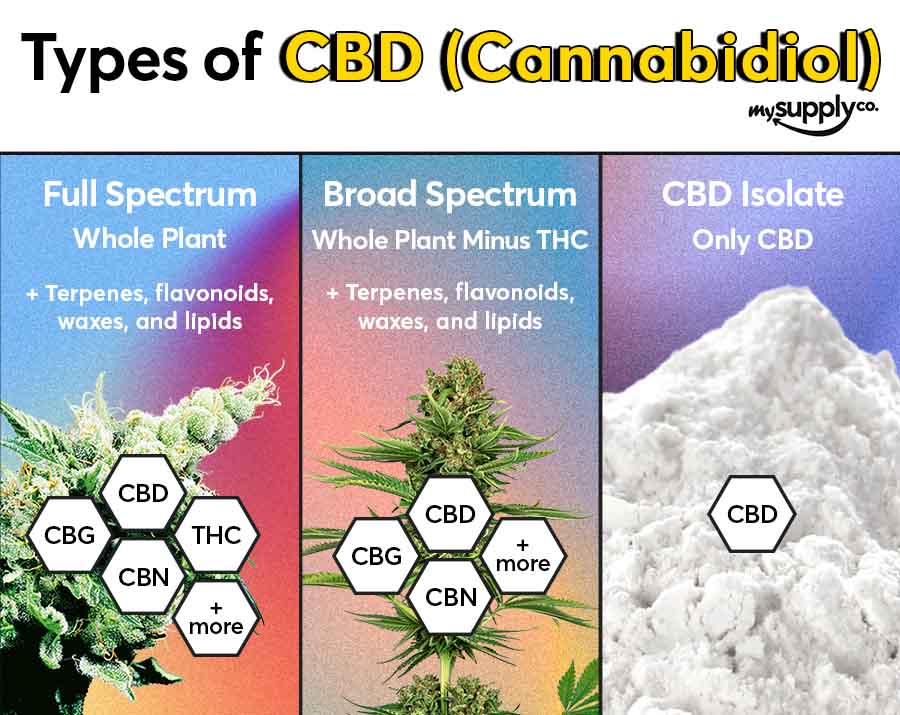
Cannabidiol, better known as CBD, is the second-most abundant cannabinoid in cannabis. Both cannabis (varieties high in THC) and industrial hemp (varieties low in THC) yield CBD. More commonly, CBD is extracted from industrial hemp due to its higher CBD levels and the relative ease of acquiring a license to grow hemp compared to marijuana. It's typically found in three options: full-spectrum CBD, broad-spectrum CBD, and CBD isolate.
In recent years, CBD has gained considerable attention, arguably even more so than THC, and is beginning to establish significant credibility within the realm of medical cannabis.
But why is that?
Firstly, it's non-intoxicating. The psychoactive nature of THC can lead to apprehension and confusion about its medical applications, but CBD sidesteps this issue due to its non-intoxicating nature. Therefore, it's being recognized more readily as a therapeutic substance.
However, unlike THC, CBD doesn't have a significant affinity for CB receptors (it has some affinity, but not much). Instead, it carries out its roles in more indirect manners.
For instance, CBD can improve mood by increasing serum levels of anandamide. It achieves this by inhibiting an enzyme known as FAAH, which is tasked with breaking down anandamide.
Okay, that's a mouthful of scientific lingo. Let's simplify.
Anandamide is a substance our body naturally produces. When it's circulating in our system, we tend to feel relaxed, happy, slightly forgetful, and mildly hungry. It's our body's own "feel-good" molecule, and is named after the Sanskrit word for bliss—"ananda".
By inhibiting the FAAH enzyme, more anandamide becomes available within the individual's system. And as we know, anandamide is associated with feelings of wellbeing and relaxation.
CBD also activates and revives serotonin 5-HT1A receptors, which improves mood, reduces anxiety and depression, and combats neuroinflammation. CBD's other brain benefits include enhancing BDNF (brain-derived neurotrophic factor) expression, which increases the pool of available neurons and stimulates the growth of new functional brain networks to enhance focus, memory, and mental clarity.
The multifaceted abilities of CBD have caught the attention of the scientific community, and as a result, it's being studied for a variety of therapeutic applications:
- Anxiety relief
- Anti-cancer properties, such as inhibiting tumor cell growth and migration
- Anti-seizure
- Antidepressant
- Pain relief
- Anti-inflammatory
- Neuroprotection
- Antipsychotic
These traits make CBD a promising candidate for treating numerous medical conditions. The list of these conditions is exhaustive, but here are just a few to give you an idea:
- Cancer
- Chronic pain
- Chronic inflammation
- Post-Traumatic Stress Disorder (PTSD)
- Alzheimer’s Disease
- Crohn’s Disease
- Depression
- Anxiety disorders
- Schizophrenia
- Parkinson’s Disease
- Multiple Sclerosis
- Epilepsy
This list is by no means exhaustive but serves to highlight the potential scope and implications of CBD use in the medical field. It's a testament to the myriad potential benefits of cannabinoids, especially when they can be used in ways that bypass the intoxicating effects associated with THC.
If you're curious about CBD but are not sure where to start, refer to our CBD dosage guide to learn how to find your ideal dose of CBD. If you want to dive right in, get started with our CBD Dosage Calculator.
Cannabinol — CBN: The Sedative Molecule

Cannabinol, commonly referred to as CBN, holds a unique place in cannabinoid history as the first one to be isolated from cannabis. What makes this fact intriguing is that CBN isn't typically found in large quantities within the plant. CBN is produced when THC degrades due to exposure to light and heat. Essentially, the older a cannabis sample becomes, the higher the levels of CBN it is likely to contain.
CBN does exhibit some psychoactive properties, but they are not as pronounced as those of THC. As a matter of fact, CBN is the only other cannabinoid we are currently aware of that has psychoactive effects.
Its potent sedative properties often lead to the "couch-lock" effect experienced by many cannabis users. Similar to THC, CBN has a notable affinity for CB receptors, although it shows a preference for CB2 over CB1. Additionally, CBN acts as an agonist to the TRPV2 receptor. This particular protein plays a key role in nociception, or our body's ability to recognize pain, suggesting that CBN may have potential in pain management.
Here are some of the notable effects of CBN:
- Mild psychoactive effects
- Strong sedative properties, leading to deep relaxation
- Potential pain reduction due to interaction with TRPV2 receptor
CBN's therapeutic potential extends to:
- Treating insomnia and promoting sleep, thanks to its highly sedative nature
- Potential pain management due to its interaction with the TRPV2 receptor
The most apparent therapeutic application of CBN lies in its potential to treat insomnia.
Owing to its intense sedative properties, it can facilitate deep, restful, and dreamless sleep, highlighting yet another facet of the medicinal prowess of cannabinoids. The therapeutic implications of CBN, like the other cannabinoids discussed, reveal the extensive range of potential health benefits that these compounds may offer.
Cannabigerol — CBG: The Anti-stress Molecule
Cannabigerol, or CBG, is not typically found in significant amounts in common marijuana strains, but it's a different story when it comes to industrial hemp. With many geneticists actively exploring high CBG hemp strains, there's a growing body of evidence to suggest that this cannabinoid could have potential therapeutic applications in treating anxiety and depression.
Here's a deeper look at the science behind CBG:
Like CBD, CBG is an antagonist of the CB1 receptor. When CBG binds to this receptor, it blocks the receptor's actions and prevents other compounds (such as THC) from binding to it. This is similar to CBD's actions and explains why CBD is often considered the "counterpart" to THC.
The primary actions of CBG are speculated to be associated with the 5HT1A receptor, which plays a crucial role in regulating the release of serotonin, the brain's natural mood stabilizer and antidepressant. Further, CBG also influences the adrenoceptor, impacting the levels of adrenaline and noradrenaline that circulate in the central nervous system. If you're not familiar, adrenaline and noradrenaline are the body's hormonal responses to danger, priming the body for action.
Notable effects of CBG include:
- Mood regulation due to its interaction with the 5HT1A receptor
- Possible adrenaline and noradrenaline level management due to its interaction with the adrenoceptor
- Like many cannabinoids, it might also provide pain relief and reduce inflammation
The primary therapeutic applications of CBG appear to revolve around:
- Mood management, due to its effect on serotonin release
- Pain reduction, a common trait shared among many cannabinoids
- Reduction of inflammation, particularly in the bowels and intestines
As with other cannabinoids, our understanding of CBG is still in its early stages, and more research is needed to fully uncover its potential benefits and uses. The insights gained so far, however, point to a promising future for CBG's therapeutic applications.
Cannabichromene — CBC: The Bowel Molecule
Cannabichromene, or CBC, was once a highly abundant cannabinoid found in cannabis plants, as noted by a study on wild, native varieties in the 1970s.
Since then, cannabis genetics have dramatically evolved, and most strains now contain more THC than CBC. Nevertheless, CBC is still plentiful in certain types of cannabis, especially tropical varieties, and has been the subject of several studies. It's worth noting that CBC is part of a large group of cannabinoids that don't have psychoactive properties.
CBC has numerous therapeutic applications, many of which overlap with THC and CBD. Let's delve a bit deeper into some of the ways CBC is utilized in medicine:
- Pain Reduction: In a 2010 study published in the British Journal of Pharmacology, scientists discovered that both CBC and CBD notably diminished pain sensation (nociception) in mice.
- Mood Improvement: CBC has also been investigated for its impact on depression. A study from 2010 found that CBC had "significant" effects on depression indicators.
- Digestive Health: A 2012 study on animal models showed that inflammation-induced hypermotility (diarrhea) was reduced after CBC administration. What's striking is that CBC normalized hypermotility without reducing bowel transit time. This is an important discovery because many anti-diarrhea medications can cause constipation due to a significant decrease in bowel transit time. This makes CBC potentially beneficial for people with inflammatory bowel conditions like Crohn's Disease.
Notable effects of CBC include:
- Pain reduction, shown through its impact on nociception in animal studies.
- Potential antidepressant effects, highlighted by its significant impact on depression indicators.
- Possible improvement in intestinal motility, especially valuable for those with inflammatory bowel conditions.
CBC's primary therapeutic applications include:
- Alleviating chronic pain, as suggested by its demonstrated effects on nociception.
- Treating depression, backed by research pointing to its considerable antidepressant effects.
- Managing digestive health issues such as Crohn's Disease, suggested by its effect on intestinal motility and inflammation.
It's important to remember that while these findings are promising, further research is necessary to fully understand the extent and mechanisms of CBC's potential benefits.
Cannabinoid acids: THC-A and CBD-A.
Tetrahydrocannabinolic Acid (THC-A) and Cannabidiolic Acid (CBD-A) often don't receive as much attention as they deserve. These are the acidic forms of THC and CBD, respectively, and are the primary forms in which these cannabinoids exist in the plant when it is harvested. The conversion to THC and CBD occurs mainly due to exposure to heat and light.
This transformation primarily happens during smoking or a process known as decarboxylation. When people smoke cannabis, they apply sufficient heat to convert THC-A into THC, which generates a psychoactive effect. Decarboxylation is a process that happens when cannabis flowers are heated, typically in an oven, to "activate" the compounds before creating tinctures, edibles, or extracts.
While most users "need" the transformation of THC-A into THC to experience psychoactive effects, both THC-A and CBD-A have numerous therapeutic applications.
Notable facts about THC-A and CBD-A include:
- THC-A is up to 30 times more bioavailable than THC. This implies that users can gain up to 30 times the benefits from raw cannabis compared to dried, smoked, or processed forms.
- CBD-A is up to 18 times more bioavailable than its non-acidic counterpart, CBD.
The trouble is that consuming large amounts of THC-A and CBD-A isn't easy, requiring significant access to raw plant material. Typically, the best way to ingest these compounds is via juicing, which necessitates a lot of cannabis.
...a lot.
The potential therapeutic uses of THC-A and CBD-A could include:
- Anti-inflammatory: Both THC-A and CBD-A have been studied for their potential to reduce inflammation, which could benefit conditions like arthritis, inflammatory bowel disease, and autoimmune disorders.
- Neuroprotective: THC-A has shown promise in protecting neurons, indicating potential applications in neurodegenerative diseases like Parkinson's disease and Alzheimer's disease.
- Anti-nausea and anti-emetic: Both THC-A and CBD-A have been found to help alleviate nausea and vomiting, potentially useful in treatments for chemotherapy-induced nausea and vomiting, and other conditions associated with these symptoms.
- Anti-proliferative: THC-A has been studied for its ability to inhibit cell growth, particularly cancerous cells, showing promise for potential use in cancer treatments.
- Anti-anxiety: CBD-A is being studied for its potential to alleviate anxiety, potentially benefiting those suffering from various anxiety disorders.
Again, further research is needed to substantiate these findings fully and explore the possible therapeutic benefits of these cannabinoids in their acidic forms. Nevertheless, the preliminary research suggests a significant potential for THC-A and CBD-A in various therapeutic applications, further emphasizing the complex and versatile nature of cannabis.
Cannabis: More than just cannabinoids.

As we mentioned earlier, of the 400-odd compounds in a specimen of cannabis, only about 60 of them are cannabinoids.
So what about the other 340 chemical entities?
Well, cannabis is one of the most complex plants on the planet, and cannabinoids aren’t the only active compounds of interest to humans. These other compounds include terpenes and flavonoids, compounds that are not unique to cannabis but certainly play important roles in the plant's complexity and therapeutic potential.
Terpenes: Cannabis’ Aromatherapy
“Terpenes” is a word commonly thrown around by the cannabis industry. These chemicals are the aromatic compounds of cannabis that contribute to the unique smells associated with different cannabis strains. They’re what make cannabis smell like “skunk”, “diesel” or “kush”.
Terpenes are not exclusive to cannabis and can be found in a variety of other plants as well. In the cannabis industry specifically, terpenes have been gaining attention due to their potential therapeutic effects.
For example, in a study of adolescents with autism, increasing the CBD dose alone did not result in significant improvement in behavioral symptoms. However, enriching the pure CBD with a carefully selected blend of anxiolytic and calming terpenes resulted in the gradual elimination of those aggressive events. Importantly, this was achieved with a significantly reduced CBD dose, being less than one-half the amount used when treating with pure CBD. This case demonstrates a strong improvement in efficacy due to terpene enrichment, where pure CBD was not sufficient.
Cannabis contains hundreds of terpenes. Each terpene has its own effect on human cells and receptors, and therefore elicits a different effect. Many cannabis geneticists attribute the difference in strain effects to the different compositions of terpenes.
The most common terpenes found in cannabis include:
- Myrcene: Associated with a mango-like scent. It's considered to have sedative and muscle relaxant properties, making it potentially useful for conditions like insomnia and muscle spasms.
- Pinene: This terpene, with a scent reminiscent of pine, is thought to have anti-inflammatory and bronchodilator properties, which could be useful in respiratory conditions such as asthma.
- Limonene: Known for its citrusy aroma, limonene is believed to have mood-enhancing and anti-stress effects, potentially benefiting those with anxiety and depression.
- Caryophyllene: Identified by its peppery smell, it's unique in that it also functions as a cannabinoid, interacting with the CB2 receptor. It's thought to have anti-inflammatory and analgesic properties.
- Linalool: Recognized by its lavender-like aroma, linalool is proposed to have calming and relaxing properties, potentially beneficial for stress, anxiety, and sleep disorders.
Each strain of cannabis has its unique profile of terpenes, influencing not only the plant's smell but also its effects, whether they are relaxing, energizing, or creativity-enhancing.
Flavonoids: Nature’s antioxidant-rich food dye
Alongside terpenes, cannabis also contains a range of flavonoids. Flavonoids are compounds known for their antioxidant properties and for contributing to the colors of many plants (other than green—chlorophyll wins the medal for that). Vegetables that are purple, red, or yellow can thank flavonoids for their colour. And typically, the darker a plant is, the more flavonoids it contains.
There are many flavonoids that have pharmacological actions. For example, quercetin is a flavonoid found in many vegetables and is antioxidant and antifungal. Flavonoids originating from cannabis are called cannaflavins, and so far, only a few have been isolated and identified: Cannaflavin A, Cannaflavin B, and Cannaflavin C.
In the context of cannabis, these flavonoids might have unique therapeutic benefits. They include:
- Cannaflavin A: This flavonoid is thought to have potent anti-inflammatory properties, potentially even more so than conventional drugs like aspirin.
- Cannaflavin B: The exact effects and potential uses of this compound are still under investigation.
- Cannaflavin C: The specifics of this compound's actions and potential therapeutic uses are also still under study.
Just as cannabinoids have demonstrated significant therapeutic potential, terpenes and flavonoids add another layer to the possible applications of cannabis. These compounds may contribute to what is known as the "entourage effect," where the various components of cannabis work together to enhance each other's effects. However, more research is needed to fully understand the roles and therapeutic potential of these compounds.
The entourage effect — What truly makes cannabis cannabis.

Cannabinoids, terpenoids, and flavonoids—the primary active compounds in cannabis—could be metaphorically seen as fingers on a hand. Much like a hand loses functionality when its fingers are severed, the various constituents of cannabis, when isolated, lose the holistic therapeutic potential exhibited when they coexist in the plant.
This interplay among the compounds is what is referred to as "the entourage effect."
In the cannabis realm, the entourage effect describes the synergistic interactions among the diverse compounds within a cannabis specimen. The concept is not unique to cannabis but is inherent to all whole plant medicines, which are not standardized to a specific dose of an active component. Each plant boasts a unique assemblage of compounds that collectively elicit an effect characteristic of that specific plant, with cannabis being no exception.
The bulk of research to date has tended to focus on individual compounds, like THC and CBD. Given the immense challenges in simultaneously studying the behavior of hundreds of compounds, definitive scientific conclusions about the entourage effect have been elusive.
Nonetheless, the work of researchers like Ethan Russo has started to shed light on why cannabis can yield such varied effects among different individuals.
In the consumption of a single joint or edible, a vast array of cannabinoids, terpenoids, flavonoids, and other secondary metabolites work in concert to produce the therapeutic effect or high. It's often unclear whether the effect arises from a singular cannabinoid, multiple cannabinoids, or the cumulative impact of myriad chemical entities.
This complex, synergistic interaction underscores the essence of the entourage effect.
Cannabis research, especially regarding cannabinoids, is arguably still in its nascent stages. The multifaceted nature of cannabis promises to keep scientists engaged for decades to come, as we are only just beginning to unravel its intricacies. Never before has a plant stirred as much intrigue and contention as cannabis, suggesting that we will continue unearthing new scientific insights about its effects on the human body for many years to come.
